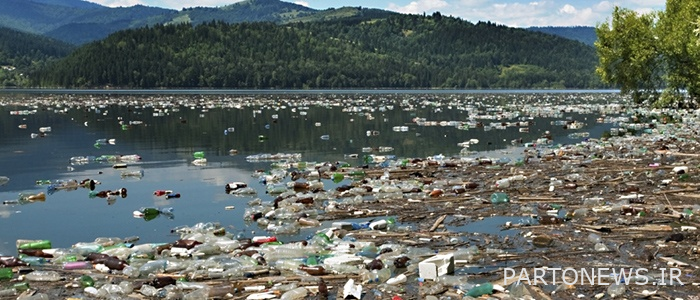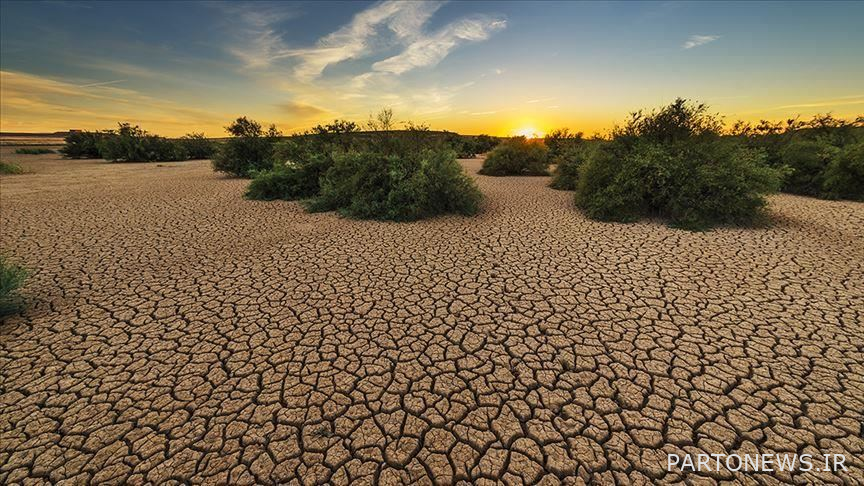Water is not just a commodity; 18 global strategies to deal with the water shortage crisis

According to IRNA, the results of surveys conducted by Gulab Scan and Sastin Ibeliti from 1,200 experts in 80 countries have been published on the “Blue Cycle” website.
According to the Water Sustainability Survey, almost every industry in the world predicts a sweeping systematic shift in strategic planning, production methods, and business models over the next decade.
A global survey of more than 1,200 sustainability experts in March found that water scarcity was changing public perceptions of water value, forcing governments and corporations to use clean water, not as a commodity. But also see it as a precious resource.
A poll by Gulab Scan, an international public opinion research firm, and Sustin Ebleti, a think tank and business strategy consultant, asked, “What are the technologies or behavioral changes that most promise to address water scarcity in the next 10 years?”
Experts’ response included 19 consensus solutions:
1. Training to change consumption and lifestyle
Ultimately, changing the face of this crisis requires training to motivate new behaviors. Dealing with the age of water scarcity in the future requires a fundamental overhaul of all types of consumption, from individual use to the supply chain of large companies such as General Electric. Some areas led by India, Australia and the southwestern United States are currently facing a freshwater crisis. The most important thing is to make sure that the problem is much better understood around the world.
۲. Innovation of new technologies for saving water
In areas where aquifers are drying up and rainwater is increasingly unpredictable, innovation is needed, but as we try to cope with freshwater shortages and develop conservation technologies, energy consumption is important.
3. Wastewater recycling
In March, members of the World Water Day working group called for a new way of thinking about wastewater treatment. Some countries, such as Singapore, are trying to recycle to reduce water imports and achieve self-sufficiency. This wealthy East Asian republic is a leader in the development of technology that treats sewage for other uses, including drinking.
4. Improving irrigation and agriculture methods
About 70% of the world’s fresh water is used for agriculture. Improving irrigation can help reduce the supply and demand gap. In some cases, improper irrigation methods intended for previous periods have undermined farmers’ ability to provide food and fiber to the growing world.
Examples include the Murray-Darling Basin in Australia, the Aral Sea in Central Asia, and the American Southwest. Although new technology has become an attractive solution, global water experts such as Peter Glick point out that in some cases, such as agricultural systems in California, success stories can be improved by improving what already exists.
5. Adjusting water prices
Water pricing and rights go hand in hand, and consumers question the benefits of higher prices. According to experts from the Organization for Economic Co-operation and Development (OECD), an international economic forum of 31 rich countries, rising prices will help reduce waste and pollution. But water cycle research in May on water pricing systems in major US cities shows that current water and electricity pricing systems are outdated, sending the wrong signals, and in need of correction.
6. Development of effective desalination energy plants
To date, desalination has been an energetic solution to water scarcity. Normally, the Middle East has invested its vast reserves of energy to build desalination plants, but Saudi Arabia could strengthen a new type of desalination plant with its recent announcement to use solar power plants. The UK has taken a different approach to agriculture with small-scale facilities, but these innovations reveal another much-needed resource, the importance of technological experimentation.
7. Improve catchment and harvest
Basin systems are essential for areas that have no other reliable water sources. Pakistan and India – two countries struggling with some of the worst effects of climate change – are improving rainwater harvesting systems. These efforts provide independent control of water resources.

8. Public participation
Social organizations enhance the experiences of those whose voices deserve to be heard more. Ensuring more effective popular governance builds communities and can lead to effective policy change at the national level.
9. Establish better policies and regulations
As water scarcity complicates food security and pollution, governments need to redefine their role. The US government is considering extending the Clean Water Act to ensure greater protection. In Russia, meanwhile, President Vladimir Putin has acknowledged the discharge of waste into Lake Baikal, one of the world’s largest freshwater sources.
Regardless of the path taken by elected leaders, opinion polls show that they take a number of approaches. The poll also found that most people say it is up to the government to ensure that communities have access to clean water.
10. Macro ecosystem management
Simply put, macro-management is a practical and rational approach to monitoring natural resources that addresses economic, cultural, and environmental goals. Good examples of macro-management are communities that set up wastewater treatment plants while also partnering with clean energy producers to use wastewater to fertilize algae and other biofuel products. The products, in turn, absorb nutrients and treat wastewater, significantly reducing pumping and treatment costs.

۱۱. Improving distribution infrastructure
Poor infrastructure is detrimental to health and the economy. It wastes resources, increases costs, reduces quality of life, and allows water-borne diseases to spread among vulnerable populations, especially children.
The problem is not limited to developing countries. In the United States, water pipes break regularly, which is a warning sign. Sewage treatment systems overflow regularly, malfunction, and close the beach.
۱۲. Reduce corporate water consumption
Industrial water consumption accounts for approximately 22% of global consumption. Industrial water contains water that is consumed directly and indirectly during the production of goods. Due to the increasing severity of water shortages, sustainable production is becoming more important, so experts question the costs of an industrial sector, especially bottled water.
13. Creating international frameworks and institutional cooperation
Binding international agreements on natural resource issues are difficult to reach. The UN Climate Change Conference is proof of this, but it should not ignore the freshwater crisis, which is arguably the most visible and terrifying threat to climate change.
Regional agreements on transboundary or shared waters, such as the Great Lakes Agreement in the United States and the Nile Basin Agreement in Africa, are just as difficult, but policymakers and advocates must continue to work. Humanitarian treaties, such as the UN Millennium Development Goals, demonstrate that comprehensive global strategies are possible.
۱۴. Elimination of pollution
Measuring and monitoring water quality is essential for human health and biodiversity. This historical issue is presented in various forms, while ensuring the quality of drinking water and locally creating international bridges for solutions is essential.

۱۵. Common public resources; Fair access
One of the Millennium Development Goals of the United Nations is to ensure access to drinking water. While the steps to achieve this goal are discussed, the view that water is a fundamental right is raised. As countries like Chile try to reform water rights, US politicians are considering how to interpret access rights for federal protection of Lake Michigan, one of the world’s largest freshwater reserves.
۱۶. Research and Development; Innovation
Access to water in the current global water scarcity situation will become a much higher priority in business decisions. Communities are likely to seek public-private partnerships that leverage the innovative potential of corporations. An example: Cities with wastewater treatment plants are likely to partner with clean energy producers to fertilize algae and other biofuel products with wastewater.
۱۷. Water projects in developing countries; Technology Transfer
Climate change and water scarcity are having the worst consequences in developing regions such as northwestern India and sub-Saharan Africa. One of the proposed solutions is to transfer water protection technologies to these arid areas. This is difficult to do because economies are weak and there are skills gaps that often force government and business officials to impose these changes on local citizens.

18. Reducing climate change
Climate change and water scarcity go hand in hand, posing some of the greatest contemporary challenges for the human race. These issues are interrelated, identified by the Intergovernmental Panel on Climate Change (IPCC), in which “water management policies and practices can affect greenhouse gas (GHG) emissions.” As renewable energy options are pursued. Water consumption from these reducing tactics should be considered in the range of alternative products, from bioenergy products to hydropower and solar power plants.
.

